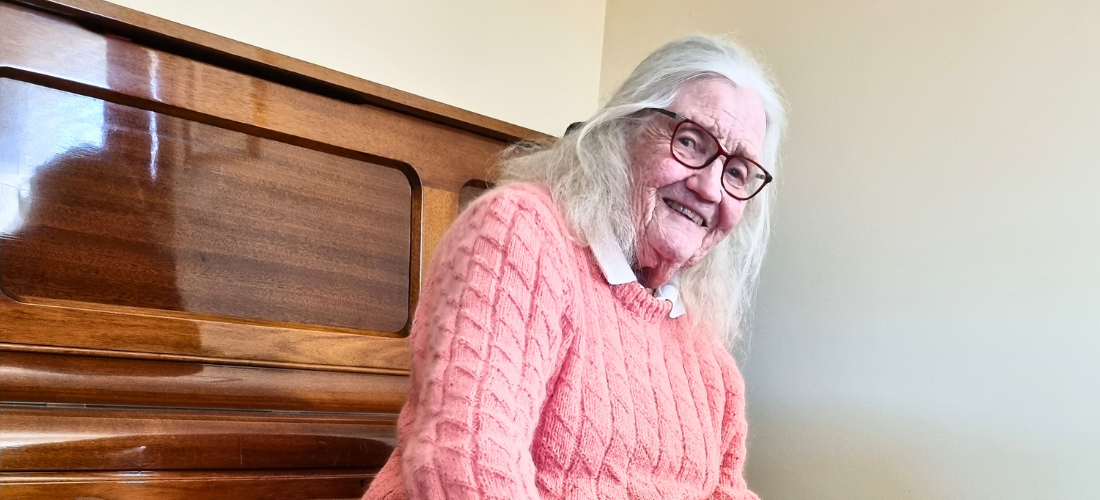Find out how the Grant Family Fund is helping Dr Xavier Hadoux use cutting-edge technology to detect the early signs of macular disease.
Artificial intelligence and the same technology NASA uses to take pictures from space might sound like the stuff of futuristic sci-fi movies.
But these are the tools Dr Xavier Hadoux is using to help people diagnosed with geographic atrophy, or dry age-related macular degeneration (dry AMD).
Dr Hadoux has received a Grant Family Fund grant to develop a new way of detecting dry AMD, using a novel eye camera called the hyperspectral camera.
While there are already effective treatments for neovascular AMD, also known as wet AMD, therapies for dry AMD are only just emerging.
And while other researchers continue working on pharmaceuticals to target dry AMD, Dr Hadoux is building a new way to identify which patients would benefit most from these new drugs, by receiving treatment before vision is lost.
“We are not doing pharmaceuticals, lots of very smart people are doing that. We’re really trying to see who would benefit from the drug by taking an image of the back of the eye,” Dr Hadoux explains.
Telling who is going to progress is very complicated. People who are progressing very rapidly, you don’t want them to lose central vision quickly — so you want them to have access to a drug as quickly as possible. That’s where we come in.
Dr Hadoux
Currently, there are two main ways to take an image of the retina.
The first is optical coherence tomography (OCT), a cross-sectional scan widely used by optometrists and ophthalmologists in Australia.
The second is fundus autofluorescence, a technique more common in research than clinical practice.
“We have a camera that’s a lot cheaper, and it’s very quick, and for us, we have all the analytics that enable us to tell which cell is going to die or not.”
So what does NASA have to do with all of this?
Dr Hadoux has developed a new camera — called the hyperspectral camera — that uses the same principles as sophisticated cameras that were first used by NASA to image the Earth from satellites.
The hyperspectral camera is like a standard retinal camera — but instead of using a white flash and capturing a single photograph, it uses a series of 30 flashes with different colours of light, capturing a photograph with each flash.
Remarkably, this all happens in a quarter of a second. And when these 30 images are combined, we gain incredibly detailed information about the eye.
What NASA is measuring is very large. We are looking at microscopic pieces in the retina, but the principles are exactly the same.
Dr Hadoux
“We illuminate the retina very quickly with different wavelengths — or colours — of light. And when we do this, light at different wavelengths interacts with the tissue differently. And by collecting the light that bounces back from those cells in the retina that might be damaged, we can tell which region is likely to be the next to progress to the disease.”
And where does artificial intelligence come into the equation?
Dr Hadoux is using AI to delve into the rich information provided by these scans to identify people who are at risk of vision loss before it happens, when treatments may be the most effective.
Specifically, AI helps sort out the normal variations between people’s eyes — what Dr Hadoux calls “background noise” — from the signals that indicate dry AMD, picking out patients at risk of progression.
Dr Hadoux did his PhD in hyperspectral imaging back home in France, using this technology to look at drone images of crops. But he wanted to use his skills for health.
Following an exchange at the University of Melbourne, Dr Hadoux reached out to the Centre for Eye Research Australia (CERA) — where he now works alongside world-renowned researchers such as Professor Robyn Guymer, a recipient of MDFA’s inaugural round of research funding in 2011.
“I was touring around and figuring out who is doing the cool stuff, and CERA was super keen for new innovation,” Dr Hadoux recalls.
“Robyn Guymer, I mean, she’s a legend in this field. So just being able to work with her, it’s just exceptional.”
Dr Hadoux says it’s difficult to find funding for ‘blue-sky’ research such as his.
On the one hand, funding bodies are hesitant to support projects that don’t yet have data to prove their potential — and on the other hand, more advanced projects can lose their appeal once they’re no longer new and fresh.
“So it’s really a fine balance of asking for grants money at the right time. The success rate on grant applications is very low and it takes quite a bit of time to apply. So it’s a tough, tough field to work in.”
That’s why Dr Hadoux is so thankful for the support of the Grant Family Fund, which is allowing his team to use their new camera on a larger cohort of patients to prove how it can help.
I mean, I’m so grateful. Personally, I’ve been co-PI (Principal Investigator) in lots of grants, but this is my first real grant for me, so I’m super excited to be able to work on this.
“I’m super keen to start working on this a bit more now that I have the funding to enable this. I’m very excited.”
In the future, Dr Hadoux hopes to see his hyperspectral camera in optometry and ophthalmology clinics across Australia and around the world.
With other researchers busy working on a long-awaited therapy for dry AMD, Dr Hadoux’s ultimate goal is to help clinicians detect the early signs of disease — and make sure those patients get the treatment they need to save their sight.
“Currently, when you diagnose someone with dry AMD, you just have to wait and see. There’s just nothing else at this stage, so it’s quite scary,” Dr Hadoux says. “But there’s definitely hope on the horizon and that’s probably very soon. So I’m very glad to be part of this.”
Could a new supplement help slow AMD?
Could a new supplement help slow AMD?
A/Prof Gerald Liew’s second MDFA Research Grant is allowing him to investigate a potential sight-saving supplement to improve dysfunctional mitochondria and prevent age-related macular degeneration (AMD).
Published: 12 December, 2023







 Play
Play








